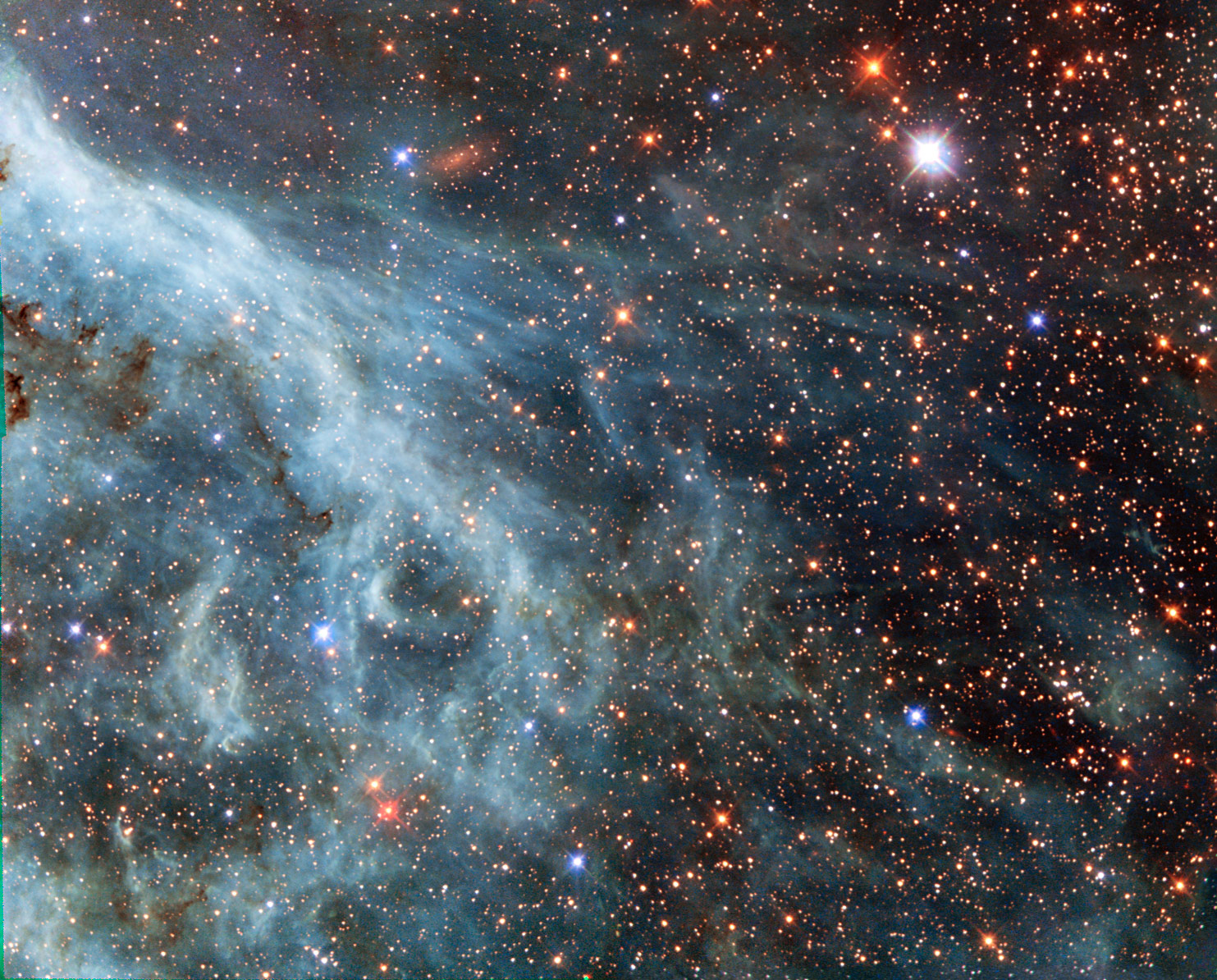In this Hubble Space Telescope image, the brightly shining plumes of the Large Magellanic Cloud (LMC) look almost like a turquoise ocean current with misty strands extending into the vicinity. The photo shows part of the vicinity of the Tarantula nebula located within the LMS, a small neighboring galaxy that orbits the Milky Way and looks like a hazy spot in our southern sky. Hubble has peered into this galaxy many times, showing stunning images of brilliant stars and swirling clouds of gas.

The color in most images of the Large Magellanic Cloud is completely different from what is seen in this image. For this image, the researchers replaced the usual R-filter with a filter that transmits near-infrared light.
The photo of the surroundings of the Tarantula Nebula is part of the Archival Pure Parallel Project (APPP), which collected and processed more than 1,000 images taken by the Hubble planetary camera, obtained in parallel with other instruments of the telescope. A significant part of the project data can be used to study a wide range of astronomical topics, such as gravitational lensing and cosmic shift, the study of distant galaxies with active star formation in various wavelength ranges.
Recall that Hubble previously photographed a “multi-arm” galaxy.
According to Sci Tech Daily
Follow us on Twitter to get the most interesting space news in time
https://twitter.com/ust_magazine

